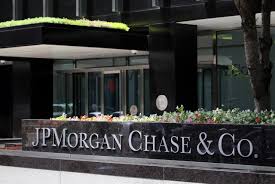Early in the fall, Blackstone Group and other investors sold Morgan Stanley $300 million in loss insurance for certain of its loans.
The transaction details—which have not been previously disclosed—were essentially an insurance policy framed as the sale of bonds known as credit-linked notes.
The $1.4 trillion asset bank might lower the amount of capital it needs to keep against those loans to cover future losses by shifting the risk to investors.
Both Blackstone and Morgan Stanley declined to comment.
According to bankers, attorneys, and investors, the deal is one of several credit risk transfer agreements that US banks are taking into consideration following a sector crisis in March and as regulators seek to raise the amount of capital they must retain.
Eight participants in the transactions were interviewed, and the results indicate that various credit-linked notes and insurance contracts are being considered as a way to free up valuable capital.
Although it is well known that banks have been using these kinds of transactions to transfer risk, these interviews provide fresh information on the kinds of deals and their conditions, offering a unique glimpse into a secretive industry.
These agreements enable banks to retain profitable enterprises that would otherwise go out of business by helping them meet capital requirements more effectively.
However, there are hazards involved. Hedged funds and other loosely regulated organizations are among the investors in these arrangements, which shifts risk to the shadow banking industry. This creates the possibility that regulators may become less aware of and knowledgeable about the risks present in the financial system. The potential to reduce risk may also incite banks to lend more aggressively, which could cause issues down the road.
“If a bank didn’t manage interest rate risk well, does it appreciate the potential risks associated with these transactions?” Jill Cetina, Moody’s assistant managing director, “It raises the need for better and more fulsome disclosure in banks’ regulatory filings.”
The risk of losses on billion-dollar loans for cars, multi-family homes, private funds, junk-rated companies, commercial equipment, and consumers has been sold by banks, including JPMorgan Chase, Merchants Bank of Indiana, and US Bancorp, according to industry sources.
According to Jon-Claude Zucconi, head of tactical situations at Apollo’s ATLAS, which arranges these kinds of transactions, numerous American banks are putting up systems to issue credit-linked notes for the first time.
In the upcoming year, he anticipates that American banks will offload the risk on around $100 billion in assets, freeing up nearly $15 billion in equity capital. Such trades provide investors with yields that range from 8% to 15%, according to Zucconi.
Merchants Bank did not reply to calls for comment, and JPMorgan and US Bancorp declined to comment.
Certain lawmakers and authorities are raising worries about Wall Street’s financial engineering. The Federal Reserve established restrictions, including size, and kept a tight eye on the Morgan Stanley deal after approving it in late September.
“If they work as planned, they could be more widely accessible,” Fed Vice Chair for Supervision Michael Barr stated last month in testimony to Congress. “If we see risks arising in those transactions, then we would limit their use for capital mitigation.”
IMPORTANT UPGRADE
The spike in interest in these deals follows the introduction of stricter capital requirements than banks had anticipated earlier this year by regulators under Barr’s direction.
As circumstances tightened following the regional banking crisis, smaller banks that are not impacted by the plan have also been considering these transactions as a means of releasing capital.
“Lend books are taking up a lot of banks’ time as they figure out how to make the most of what they have,” stated Missy Dolski, global head of capital markets at Varde Partners, an investment firm that makes these kinds of investments.
According to Sam Graziano, managing director of consultancy firm Chatham Financial, several banks have reduced their lending, sold off loan portfolios, and closed operations. These actions were not the best ones to take because they hurt the banks’ competitiveness and market share.
Some thought about selling preferred stock and shares to raise money, but Graziano noted that this was costly because of the high interest rates and poor stock valuations.
With the Fed’s explanation of what is permissible, Cory Wishengrad, head of fixed income at Guggenheim Securities, indicated that they can also explore credit risk transfer as a tool.
Frequently, these deals are set up so that the bank must hold the money on deposit for the duration of the exchange, according to Jed Miller, a partner at Cadwalader, Wickersham & Taft. Barr testified that the upfront money reassured Fed in Morgan Stanley’s case.
DISTINCTIVE DEALS
In Europe, credit risk transfers are prevalent. Banks move loans to special purpose companies (SPVs), which are off-balance sheet organizations, and then sell the loan risk to SPVs. These agreements are known as linked notes with synthetic credit. However, SPVs may have additional difficulties related to taxes.
The sources and the regulatory filing state that Morgan Stanley retained the loans, a portfolio of revolving credit lines to private funds known as subscription lines, on its balance sheet as a result of the transaction.
Based on regulatory filings and sources, U.S. Bank followed up with a comparable agreement in late October and gained approval from the Fed last week for a similar transaction.
Why U.S. Bank and Morgan Stanley decided to issue a direct credit-linked note instead of a synthetic one was beyond the scope of this investigation.
Synthetic deals have been chosen by other US institutions. Merchants Bank, a lender with $16 billion in assets and an Indiana headquarters, completed one of the first ones this year. Its structure’s specifics provide insight into how these transactions operate.
A $158.14 million credit-linked note, offering credit protection on certain commercial mortgages, including loans to assisted living and nursing homes, was priced by merchants on March 24, according to the provisions of the agreement. Due to the transaction, Merchant’s capital was released, enabling it to extend fresh loans.
Under the terms of the deal, investors would bear the remaining 14% of the portfolio’s losses after the bank took up the first 1% of it. This indicates that merchants maximized the capital relief they might receive on the loan portfolio by selling the riskiest tranche.
According to the term sheet, the investors gave Merchants Bank protection by placing money in a collateral account.
Requests for comments were not answered by the merchants.
Subsequently, JPMorgan executed one of these deals’ biggest volumes last month. According to three reports, it offered $2.5 billion in synthetic credit-related notes to investors. According to the sources, they made reference to a pool of loans and mortgages worth roughly $20 billion.
Banks are also taking into account transactions to reduce risk on a single loan or a portfolio by purchasing insurance, according to Deborah Staudinger, banking and loan finance partner at Hogan Lovells.
One or more insurers may post cash or other collateral to secure the arrangements, which have not yet been finalized. It remains to be seen if US regulators will permit these insurance agreements to be eligible for capital relief, according to Staudinger.

















